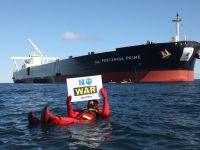Tunisia produces modest volumes of oil and gas, but these may increase in the future with adequate investment.
Information contained in this report is the best available as of June 2000 and is subject to change.
GENERAL BACKGROUND
In October 1999 elections, President Zine el Abidine Ben Ali was reelected, along with his party, the Rassemblement Constitutionnel Democratique (RCD), which won 91.5 percent of votes cast in parliamentary elections. Tunisia's real gross domestic product (GDP) is expected to grow by around 6.2 percent in 2000, about the same as in 1999.
Main driving forces behind Tunisia's economic growth are: strong domestic demand; export growth, in particular as European demand for Tunisian textiles, mechanical and electrical goods, and agricultural produce, rises; an upsurge in foreign investment, which began in 1998 (and which is likely to accelerate in 2000 with the sale of three state-owned cement companies plus work by foreign companies on the Miskar gas field and the Rades II power station); good macroeconomic management, which has kept inflation at its lowest level in 30 years;
strong tourism revenues (and a strong service sector overall); and sufficient rains for agricultural purposes (plus the opening of two dams, and the expansion of another one). On the negative side, Tunisia has a high foreign debt burden, and a large merchandise trade deficit (offset in part by a surplus in services). In June 2000, the World Economic Forum (WEF) said that Tunisia has the soundest economic growth prospects of all African countries surveyed by the WEF.
According to the Economist Intelligence Unit (EIU), Tunisia's economic policies for 2000 can be summarized as follows: 1) reducing unemployment; 2) increasing investment; 3) boosting exports and becoming more competitive internationally; 4) encouraging information technology research and development in Tunisia; 5) continuing to deregulate the country's currency, the dinar; 6) investing in infrastructure; 7) promoting regional growth; and 8) establishing free-trade agreements with other Arab states (such as the Arab Maghreb Union). Economic reform is expected to continue under new prime minister Mohamed Ghannouchi.
A European Union (EU)-Tunisia association agreement went into effect in 1998, under which Tunisia is to dismantle its customs barriers to European goods over a 12-year period. On January 1, 2000, tariff barriers were lifted for European manufactured goods on "List 4" (consumer goods which have an equivalent in Tunisia) Around 75 percent -80 percent of Tunisia's exports go to the EU. Prior to talks with the EU on agriculture, Tunisia is planning on speeding up privatization of its public sector and medium-sized firms, including those in the agricultural sector.
In June 2000, Tunisia reportedly agreed with Libya on creation of a free-trade zone, following a meeting between the two countries leaders. The countries also agreed to double their bilateral trade volume, and to the "immediate restart" of flights between the two countries following the United Nation's deicison to ease sanctions on Libya. Overall, Libya is Tunisia's leading economic partner in Africa. Tunisia also has had a free-trade agreement with Morocco for about a year. ( see also the annexes below )
OIL and GAS
In 1999, Tunisia produced around 82,000 barrels per day (bbl/d) of oil, nearly all of which was crude oil (1,000 bbl/d was natural gas liquids). This represented a nearly 25 percent decline from the country's peak oil output, of 110,000 bbl/d, in 1998.
This could turn around in coming years with sufficient investment, exploration and development. Currently, Tunisia has over 300 million barrels in proven oil reserves, with estimated recoverable reserves significantly higher than that, and plans $400 million worth of new oil and gas projects over the next two years. One important hydrocarbons area is the Gulf of Gabes, where fields (i.e., Ashtart, Bouri, Hasdrubal, Salambo) may contain 1.5 billion barrels of recoverable oil. Recently, Tunisia awarded a permit ("Alyane") in this area to Houston-based Nuevo Energy.
Meanwhile, a Tunisian-Libyan joint venture is exploring the "7th November" oilfield, which lies across the line separating Tunisian and Libyan territorial waters. State-owned petroleum company ETAP, along with Fugro-Geoteam, has begun a 2D seismic survey covering four open blocks offshore Tunisia (E2-Nabeul, E3-Mahdia, E4-Kaboudia, and E5-Sidi Mansour).
Another important area for oil and gas in Tunisia is the Ghadames Basin, in the southern part of the country, location of the El Borma oil field. Anadarko Petroleum is active in this area, as is Union Texas Petroleum and Phillips Petroleum.
Tunisia has 2.8 trillion cubic feet (Tcf) of proven natural gas reserves, and produced 67 billion cubic feet (bcf) of natural gas in 1998. British Gas (BG) is planning a large-scale ($450-million) expansion of the Miskar gas field, located in southeastern Tunisia. BG, the largest investor in Tunisia's energy sector, has agreed to supply a large proportion of Tunisia's domestic gas requirements through 2020.
Miskar currently produces around 168 million cubic feet per day (Mmcf/d) of gas, which supplies around 65 percent of Tunisia's total daily gas demand, and this is to be expanded in several phases, beginning this year, over five years.
BG also is planning on developing the Hasdrubal natural gas and gas condensate field and conducting further exploration for hydrocarbons over a 12-year period. Finally, BG is looking at developing compressed natural gas as a vehicle fuel.
Baker Hughes reportedly is farming out 75 percent interests in its oil and gas concessions in northern Tunisia and northern Egypt. This includes the offshore Zembra block, which incorporates most of the Gulf of Tunis, and in which it holds a 100 percent interest (after Maxus Energy relinquished its share and operatership in June 1998).
In October 1997, Tunisia announced that construction work on a new oil pipeline linking the Sidi el Kilani oilfield (the country's third largest) and the oil terminal of Skhira. The pipeline is to have capacity of 25,000 bbl/d. A gas pipeline also is set to link Libya and Tunisia by 2003, with Libyan gas supplies being sold to Tunisia.
Source: United States Energy Information Administration.
Information updated until June 2000.
© 2000 Mena Report (www.menareport.com)







